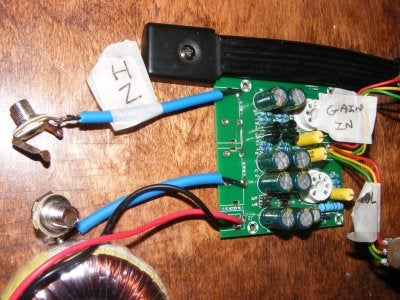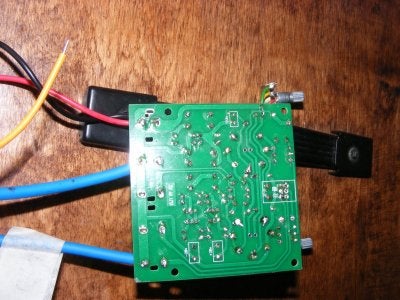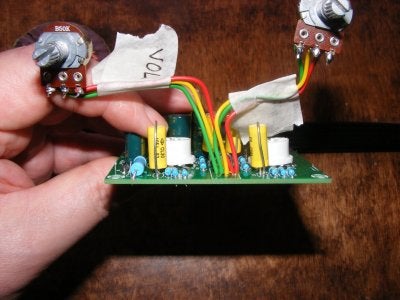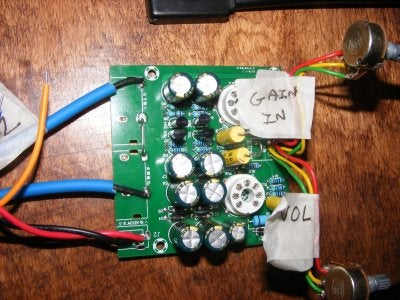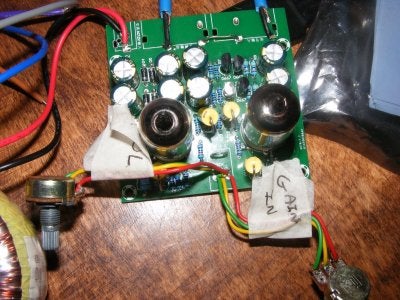As per the title really. I was bored and browsing Ebay one evening when I came across a preamp kit based around a pair of 6j1 valves.
Hmm. Remove the on/off/pot and short out the switch part. Feed the left channel input through a 50K pot ( 50K is what's used on the board ) to set the gain, then take the left channel output and feed it through another pot ( value to be determined by experiment/what I have to hand ) in to the right channel input to set the output gain/level/volume, call it what you will. Basically building another low voltage valve overdrive. These boards take a 12V AC voltage and through on board magic bump it up to 56V ( +/- 28V ) so hopefully it'll be a little less sterile than a 9V or 12V starved plate pedal, while still not being the full 120V the valves would like.
I've got a Behringer VT911 that is to be sacrificed for the cause and it is large enough to house the board and a 12V transformer. It'll also provide the switch. I have a suitable mains switch and inline fuse.
Any obvious flaws in this plan?

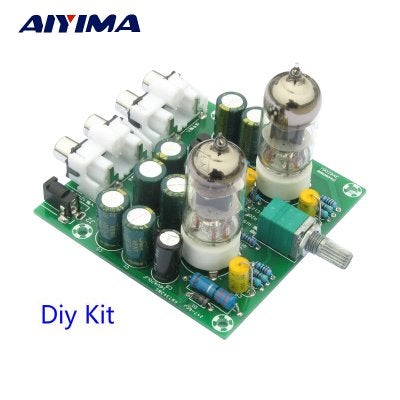
Hmm. Remove the on/off/pot and short out the switch part. Feed the left channel input through a 50K pot ( 50K is what's used on the board ) to set the gain, then take the left channel output and feed it through another pot ( value to be determined by experiment/what I have to hand ) in to the right channel input to set the output gain/level/volume, call it what you will. Basically building another low voltage valve overdrive. These boards take a 12V AC voltage and through on board magic bump it up to 56V ( +/- 28V ) so hopefully it'll be a little less sterile than a 9V or 12V starved plate pedal, while still not being the full 120V the valves would like.
I've got a Behringer VT911 that is to be sacrificed for the cause and it is large enough to house the board and a 12V transformer. It'll also provide the switch. I have a suitable mains switch and inline fuse.
Any obvious flaws in this plan?



